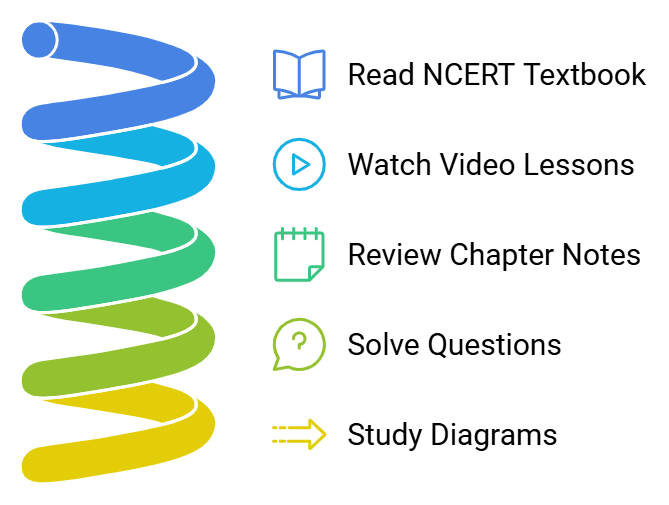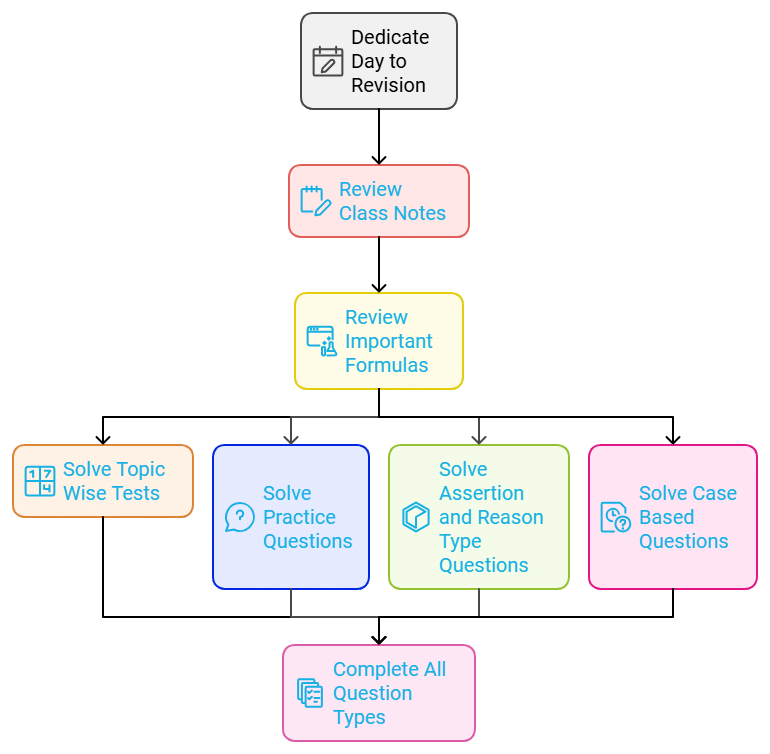5 Days Timetable: The Human Eye and the Colourful World | Science Class 10 PDF Download
The chapter on "The Human Eye and the Colourful World" is a significant part of your Class 10 board exam. Understanding the functioning of the human eye, optical phenomena, and various aspects of light is crucial not only for your exams but also for comprehending the world around you. This chapter comprises six main topics: The Human Eye, Defects of Vision And Their Correction, Refraction of Light Through A Prism, Dispersion of White Light By A Glass Prism, Atmospheric Refraction, and Scattering of Light.
In this study plan, we will outline a 5-day strategy to cover these topics effectively, followed by a dedicated day for revision. Feel free to adjust the pace according to your comfort, but maintaining the pattern of covering these topics remains essential.
Topics to Cover
Before diving into the study plan, let's take a look at the topics we will cover in this chapter:

Now, let's break down the study plan for each topic:
Day 1: The Structure and Functions of the Human Eye
What to Cover:

Study Tip: Focus on understanding the basic structure and functioning of the eye, as this is fundamental to the rest of the chapter.
Day 2: Power of Accommodation and Defects of Vision
What to Cover:

Study Tip: Understand how different vision defects occur and how they are corrected using lenses.
Day 3: Refraction of Light Through a Prism and Dispersion
What to Cover:

Study Tip: Focus on how a prism disperses white light and the formation of the spectrum.
Day 4: Atmospheric Refraction and Scattering of Light
What to Cover:

Study Tip: Understand the real-world applications of these phenomena, such as why the sky is blue and why stars twinkle.
Day 5: Revision and Testing
How to Revise:

Study Tip: Comprehensive testing will help identify areas that need further review.
Revision and Practice
Here are all the important links and topic links for the chapter "The Human Eye and the Colourful World" summarized at the end:
Important Links:
- Class 10 Boards - Explore Class 10 board exam resources.
- Past Year Questions - Access past year board exam questions.
- Chapter: The Human Eye and the Colourful World - Study resources for this chapter.
- Chapter Notes - Summarized notes for quick revision
- NCERT Textbook - Refer to the NCERT textbook.
- NCERT Solutions - Solutions to NCERT questions.
- Short & Long Questions & Answers - Practice various types of questions.
- Assertion & Reason Type Questions - Test your understanding with assertion and reason type questions.
- PPT - The Human Eye and the Colourful World - Visual aids for better comprehension.
- Mindmap - Visual summary of the chapter.
- Lakhmir Singh & Manjit Kaur Solutions - Solutions to textbook exercises.
- NCERT Exemplar - Additional practice questions.
- Topic Wise Test - Topic-specific quizzes.
- Practice Questions - Practice questions for thorough preparation.
- HOTS Questions - High-order thinking questions.
- Case Based Questions - Questions based on real-life scenarios.
- Worksheet: Human Eye and Colourful World - Additional practice worksheets.
- Worksheet Solutions: Human Eye and Colourful World - Solutions to practice worksheets.
- Very Short Answer Type Questions - Quick practice questions.
- Short Answer Type Questions - Detailed practice questions.
- Long Answer Type Questions - In-depth practice questions.
These resources, along with the study plan, will help you excel in the chapter "The Human Eye and the Colourful World" and perform well in your Class 10 board exams.
Best of luck with your Class 10 board exams!!!
|
80 videos|569 docs|80 tests
|
FAQs on 5 Days Timetable: The Human Eye and the Colourful World - Science Class 10
| 1. What are the main parts of the human eye and their functions? |  |
| 2. What is the power of accommodation in the human eye? |  |
| 3. What are common defects of vision and how can they be corrected? |  |
| 4. How does light refract through a prism and what is dispersion? |  |
| 5. What is atmospheric refraction and how does it affect our perception of objects? |  |

















